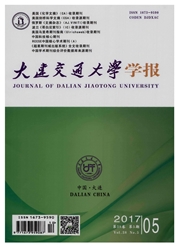

 中文摘要:
中文摘要:
Top structure and basement will confront the risk of being damaged on account of large stress and strain fields incurred by differential uplift and settlement between inner column and diaphragm wall in top-down method. Top-down excavation of the Metro Line 10 in Shanghai was modeled with finite element analysis software ABAQUS and parameters of subsoil were obtained by inverse analysis. Based on the finite element model and parameters, changes in the following factors were made to find more effective methods to restrain differential uplift and settlement: length of diaphragm wall, thickness of jet-grouting reinforcement layer, ways of subsoil reinforcement, sequence of pit excavation, connection between slabs and diaphragm wall or column and width of pit. Several significant results are acquired. The longer the diaphragm wall is, the greater the differential uplift between column and diaphragm wall is. Rigidity of roof slab is in general not strong enough to keep diaphragm wall and column undergoing the same uplift during excavation; Uplift at head of column and differential uplift between column and diaphragm wall decrease when subsoil from-16.6 to-43 m in pit is reinforced through jet-grouting. But, as excavation proceeds to a lower level, benefit from soil reinforcement diminishes. During the process applying vertical load, the larger the depth of diaphragm wall is, the smaller the settlement is at head of column and diaphragm wall, and the greater the differential settlement is between column and diaphragm wall. When friction connection is implemented between column, diaphragm wall and floor slabs, uplifts at head of column and diaphragm wall are larger than those of the case when tie connection is implemented, and so does differential uplift between column and diaphragm wall. The maximum deflection of diaphragm wall decreases by 58% on account of soil reinforcement in pit. The maximum deflection of diaphragm wall decreases by 61.2% when friction connection is implemented instead of tie connection.
 英文摘要:
英文摘要:
Top structure and basement will confront the risk of being damaged on account of large stress and strain fields incurred by differential uplift and settlement between inner column and diaphragm wall in top-down method. Top-down excavation of the Metro Line 10 in Shanghai was modeled with finite element analysis software ABAQUS and parameters of subsoil were obtained by inverse analysis. Based on the finite element model and parameters, changes in the following factors were made to find more effective methods to restrain differential uplift and settlement: length of diaphragm wall, thickness of jet-grouting reinforcement layer, ways of subsoil reinforcement, sequence of pit excavation, connection between slabs and diaphragm wall or column and width of pit. Several significant results are acquired. The longer the diaphragm wall is, the greater the differential uplift between column and diaphragm wall is. Rigidity of roof slab is in general not strong enough to keep diaphragm wall and column undergoing the same uplift during excavation; Uplift at head of column and differential uplift between column and diaphragm wall decrease when subsoil from-16.6 to-43 m in pit is reinforced through jet-grouting. But, as excavation proceeds to a lower level, benefit from soil reinforcement diminishes. During the process applying vertical load, the larger the depth of diaphragm wall is, the smaller the settlement is at head of column and diaphragm wall, and the greater the differential settlement is between column and diaphragm wall. When friction connection is implemented between column, diaphragm wall and floor slabs, uplifts at head of column and diaphragm wall are larger than those of the case when tie connection is implemented, and so does differential uplift between column and diaphragm wall. The maximum deflection of diaphragm wall decreases by 58% on account of soil reinforcement in pit. The maximum deflection of diaphragm wall decreases by 61.2% when friction connection is implemented instead of tie connection.
 同期刊论文项目
同期刊论文项目
 同项目期刊论文
同项目期刊论文
 Finite element analysis of the effect of soil displacement on the bearing capacity of single frictio
Finite element analysis of the effect of soil displacement on the bearing capacity of single frictio 期刊信息
期刊信息
